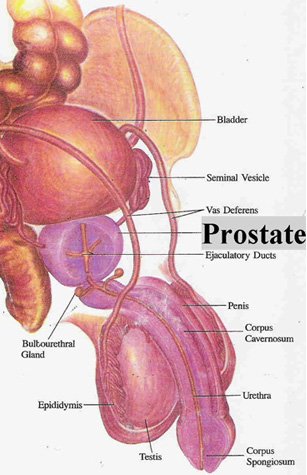Dear Dr. B: We are in Arizona for the winter. My husband and I have always taken calcium and Vitamin D. There seems to be a lot of controversy here with several people who feel that calcium for men is putting them at high risk for prostate cancer.
Apparently this warning was on T.V. and in the newspapers. What is the truth, doctor?
Answer: Nobody knows exactly what causes prostate cancer. There are a variety of factors implicated in this process. There are some factors (diet and weight) you can change but others like age, ethnicity and family history cannot be changed.
As we know, prostate gland is present only in man. Any normal man can develop prostate cancer because normal men have male hormones (testosterone). Lack of testosterone due to any cause can reduce the risk of prostate cancer.
Age is an important factor. Prostate cancer is rare before the age of 45. As one gets older, the risk increases. Men of African or Caribbean ancestry have the highest risk.
What has race to do with prostate cancer? Scientists are not sure about that. There may be subtle genetic, dietary, environmental and hormonal differences. Another interesting fact is that dark skin absorbs less sunlight than light skin, which may contribute to the higher incidence of prostate cancer among men of African or Caribbean ancestry because of lack of vitamin D.
Family history is important. If your father or brother has had prostate cancer you are approximately two to two and half times more likely than the average man to be diagnosed with the disease during your lifetime. Having two first-degree relatives with prostate cancer increases your risk to about five to 10 times that of a man with no family history, and your risk soars to almost 100 per cent if three or more first-degree relatives have had prostate cancer.
Diet is linked to prostate cancer. A low fat diet may help prevent prostate cancer. Foods rich in saturated fats have been associated with increased risk of prostate cancer, possibly because they are metabolized into testosterone. Fish oils may protect against prostate cancer especially omega-3 fatty acids found in fatty fish like trout, anchovies, bluefish and white albacore tuna.
What about the role of milk, cheese and calcium? The American Cancer Society website article of 2001says, “Experts say excessive calcium intake may be unwise in light of recent studies showing that high amounts of the mineral may increase risk of prostate cancer.”
Here is a dilemma. There is a reasonable evidence to suggest that calcium may play an important role in the development of prostate cancer but evidence also shows calcium may lower the risk of colon cancer and age-related thinning of the bones.
The recommended daily allowance (RDA) of calcium is 1,000 mg per day for men and 1,500 mg for women. Important thing to remember is the words, “excessive calcium intake.” It is also critical to remember that this evidence is not conclusive. The word “may” is used quite often in this context.
You can have milk, cheese and other dairy products in moderation. An 8-ounce glass of milk contains about 300 mg of calcium, an ounce of cheese has about 200 mg, and a serving of yogurt has about 312 mg of calcium. Men should stay within 1000 mg of calcium per day. And don’t forget your vitamin D 1000 to 2000 IU per day especially in winter months. Vitamin D has an important role in preventing prostate cancer and other cancers.
A balanced diet, combined with regular exercise, is always a good idea.
Start reading the preview of my book A Doctor's Journey for free on Amazon. Available on Kindle for $2.99!
